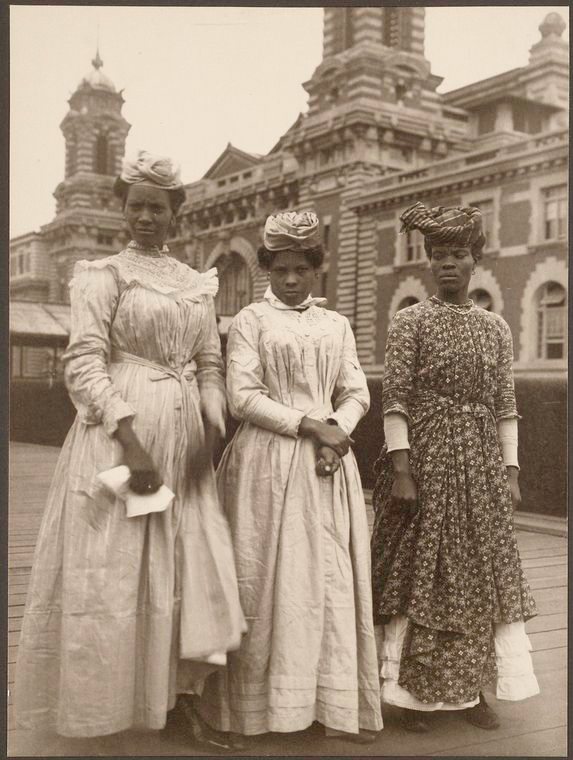Small Islands, Big Carnival: West Indians in the USA
Summer 2016 has unofficially come to a close (it actually ends September 22). We customarily mark the beginning of the summer season with Memorial Day and its end with Labor Day. Immediately after Labor Day (and even a few weeks before) students return to school and thoughts of autumn leaves fill our heads.
Although it's the end of the summer season, a sad time for many, for millions of others it ends with a smile on Eastern Parkway in Brooklyn. The West Indian American Day Carnival Association (WIADCA) throws a fun-filled five day carnival featuring reggae, soca, steel pan music and other Caribbean art forms and this celebration culminates on Labor Day with the New York Caribbean Carnival Parade, often described as the largest parade in the city.
How did it all begin? Well as the association's name indicates by West Indian Americans. The West Indies is a term that is synonymous with the regional term Caribbean, but the term West Indian is often used to describe African descendants from the English speaking Caribbean islands. In a broader sense it refers to other nations such as Haiti and Guyana in South America which is culturally a part of the West Indian community.
West Indian natives and descendants along the parade route will represent the region in the broader sense of the term. In fact, you will see people of various ethnicities since many West Indian nations are multiethnic, but the majority of West Indian natives are of African descent. As a result, West Indian immigrants form the largest Black immigrant group in the city and most likely nationwide. All of the countries are considered small nations, Haiti has the largest population with a little over 10 million people, so a collective of small nations will come together to throw the biggest party in our city.
West Indians have traveled to these shores for centuries. America's first black newspaper Freedom's Journal, published in 1827, was initially coedited and later edited solely by Jamaican born John B. Russwurm. West Indian descendant, Shirley Chisholm, a Barbadian-American was the first Black woman to seek nomination by a major political party for the U.S. presidency. Actor Sidney Poitier and singer/actor Lenny Kravitz (son of the late actor Roxie Roker) are of Bahamian descent. The outsized contributions made by West Indians and West Indian Americans are too many to list here, but at the Schomburg Center for Research in Black Culture and many of the branches of the New York Public Library you will find numerous resources providing information on the great impact of this dynamic community.
A small sample of the works we've collected about the community has been added below.
 Blood Relations: Caribbean Immigrants and the Harlem Community, 1900-1930 by Irma Watkins-Owens
Blood Relations: Caribbean Immigrants and the Harlem Community, 1900-1930 by Irma Watkins-Owens
"The social significance of foreign-born blacks in Harlem—nearly 25 percent of the community's population in 1930—has been almost completely ignored in African American history and migration studies of the early twentieth century. Yet as a contemporary put it, 'almost every important development originating in Harlem' involved the participation of black immigrants."
 Caribbean New York by Philip Kasinitz
Caribbean New York by Philip Kasinitz
This book focuses on post 1965 immigration and compares the experiences of migrants in the most recent West Indian immigration wave with those from previous immigration waves.

City of Islands: Caribbean Intellectuals in New York by Tammy L. Brown
Prominent emigrants from the first wave of West Indian immigration are featured in this book. Each of them has made a lasting impact to American society. Some of the individuals featured are: Trinidadian dancer/choreographer Pearl Primus, writer Paule Marshall and politician Shirley Chisholm, both Barbadian-Americans, as well as Jamaican-born Ethelred Brown.

"Look for Me All Around You": Anglophone Caribbean Immigrants in the Harlem Renaissance Edited by Louis J. Parascandola
This literary collection includes the works of prominent West Indians during the Harlem Renaissance. Within you will find the works of Garvey, Walrond, Hubert H. Harrison, J.A. Rogers and many more.

The Other Black Bostonians: West Indians in Boston, 1900-1950 by Violet Showers Johnson
This study discusses the contributions and achievements of West Indian immigrants who settled in Boston, the third most popular U.S. destination for that immigrant group, during the first half of the twentieth century.
Read E-Books with SimplyE
 With your library card, it's easier than ever to choose from more than 300,000 e-books on SimplyE, The New York Public Library's free e-reader app. Gain access to digital resources for all ages, including e-books, audiobooks, databases, and more.
With your library card, it's easier than ever to choose from more than 300,000 e-books on SimplyE, The New York Public Library's free e-reader app. Gain access to digital resources for all ages, including e-books, audiobooks, databases, and more.
If you don’t have an NYPL library card, New York State residents can apply for a digital card online or through SimplyE (available on the App Store or Google Play).
Need more help? Read our guide to using SimplyE.
